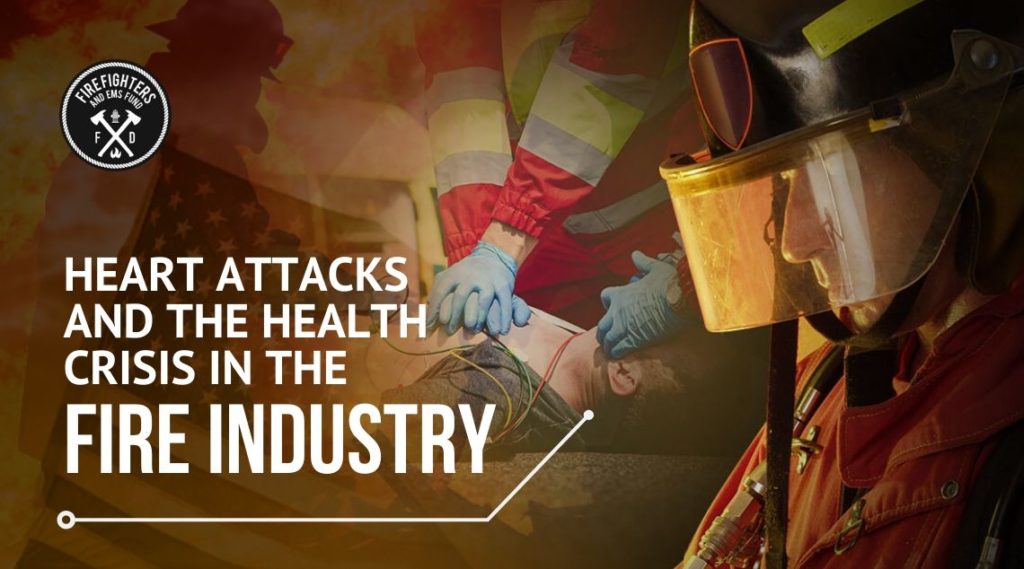Everyone knows that the situations firefighters regularly encounter requires intense manual labor. It makes sense that one of the basic requirements of becoming a firefighter is passing an intense physical ability test, including stair climbs, equipment hauls, ladder raise and extension, forcible entry, and more. The heightened physical demand would leave many to believe that firefighters achieve and maintain an optimal level of fitness in order to be successful in the line of duty. Which makes this firefighter demographic all the more startling: The top cause of on-duty death in firefighters is a heart attack.
Yes, firefighter candidates are required to be in peak physical condition in order to pass the vigorous physical exam before entering the force. But after admittance, regular physical activity tends to slow down. According to the Health and Fitness Programs for Firefighters report done by the Strength and Conditioning Journal, firefighting trends are significantly different now compared with the past. Fire retardant building practices, fire prevention technology, and increased use of alarms and sprinkler systems have significantly reduced the number of fires that take place nationally and within communities, reducing the percentage of service calls for fires. Calls are now primarily associated with emergency medical service first response, general service, and alarm malfunctions. The majority of their time is spent responding to general emergencies; where great physical exertion is no longer needed.

Because of this, fitness tends to slip off the list of priorities for many firefighters. According to Firehouse.com, “The sedentary hours firefighters may spend in the fire station may be as hazardous for them as fighting a fire. A major reason for firefighters’ high risk of heart attacks may be that they get little or no exercise while on-duty or neglect to perform while at home. The sudden, intense energy demand that is needed to fight a fire is what puts the firefighter who is not in good physical condition in grave danger.” And while the percentage of fires has decreased, the level of physical exertion needed to fight them has not. Firefighter statistics say that the air tanks, fire retarded boots, gloves, and helmets that they’re required to wear total as much as 70 lbs. If they’re managing a hose or axe, add another 30 lbs. And when you consider that firefighters are often required to climb stairs, the physiological and metabolic load on the firefighter quickly approaches near maximum levels. Exposure to heat stress and psychological stress puts a tremendous strain on the cardiovascular and musculoskeletal systems. Firefighter-specific can require as much as 12 times the oxygen as resting, making them likely candidates for a cardiovascular attack (Health and Fitness Programs for Firefighters).
Naturally, firefighters are also exposed to forces beyond their control that are associated with the job. Intense work near hot fires, exposure to carbon monoxide, and other physical stressors increase the likelihood of heart disease, and are par for the course in the fire industry. However, the biggest contributor to heart disease is lack of physical fitness, being overweight, and smoking.
In 2014, the Federal Emergency Management Agency (FEMA) awarded Mayer and the University of South Florida a $1.3 million Assistance to Firefighters Grant (AFG) to expand research on injuries in the fire industry, specifically those in the lower back. According to the report done across 78 stations in four different departments, there are four basic barriers to adhering to exercise and fitness program success in fire departments: time, support, resources, and motivation. Researchers found that without these, firefighters are considerably more likely to lose motivation to exercise, both on and off duty.
Here’s why it’s easy for firefighters to fall behind. Time to exercise is difficult to come by, given lengthy and often overnight shifts. Many departments won’t support on-duty exercise because of management concerns, and fear that firefighters will push back on feeling micromanaged. And when it comes to financial resources, not every fire department, either paid or volunteer, is able to make the investment in encouraging and establishing fitness programs. It can take years to plan and secure approval for funding. Even when funding is secured, departments will continue to look for free or reduced-cost alternatives. Finally, stress and behavioral health issues that are commonly associated with the fire industry can make it difficult to stay motivated, even after a routine has been established.
Just like an athlete, a firefighter must be fit for the demands of their job. Regardless of the obstacles in the way, it is of the utmost importance that fire departments continue to provide resources to their firefighters and encourage them to pursue a healthy balance of fitness, nutrition, and behavioral health practices. Cardiovascular, resistance, and flexibility exercises all go a long way in preventing obesity, heart attacks, and other cardiovascular problems.
Do you know of a firehouse in need of fitness resources? The Fire and EMS fund wants to help. Reach out to our executive director Nile at nile@fireandemsfund.com to learn more about funding opportunities.









